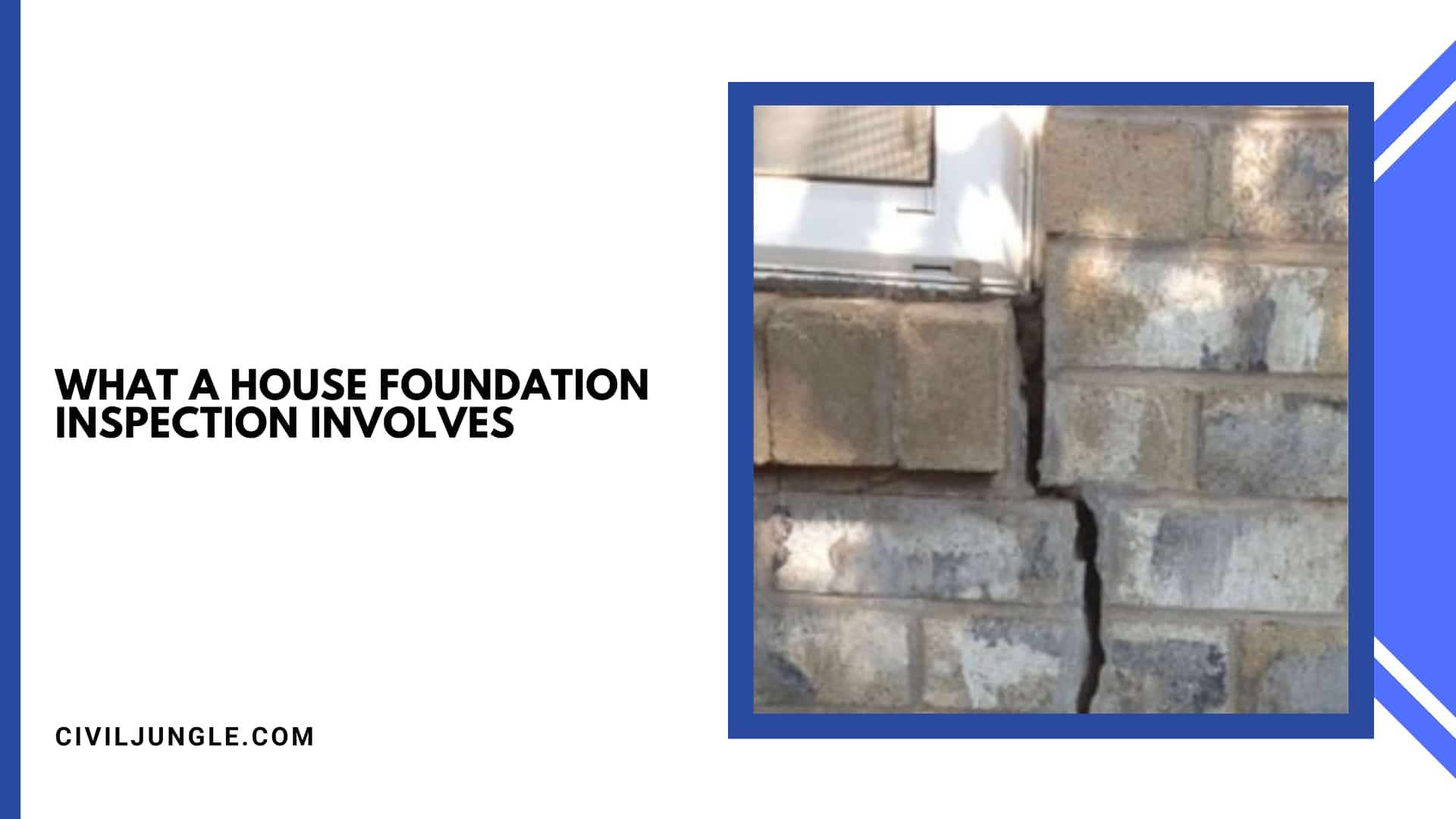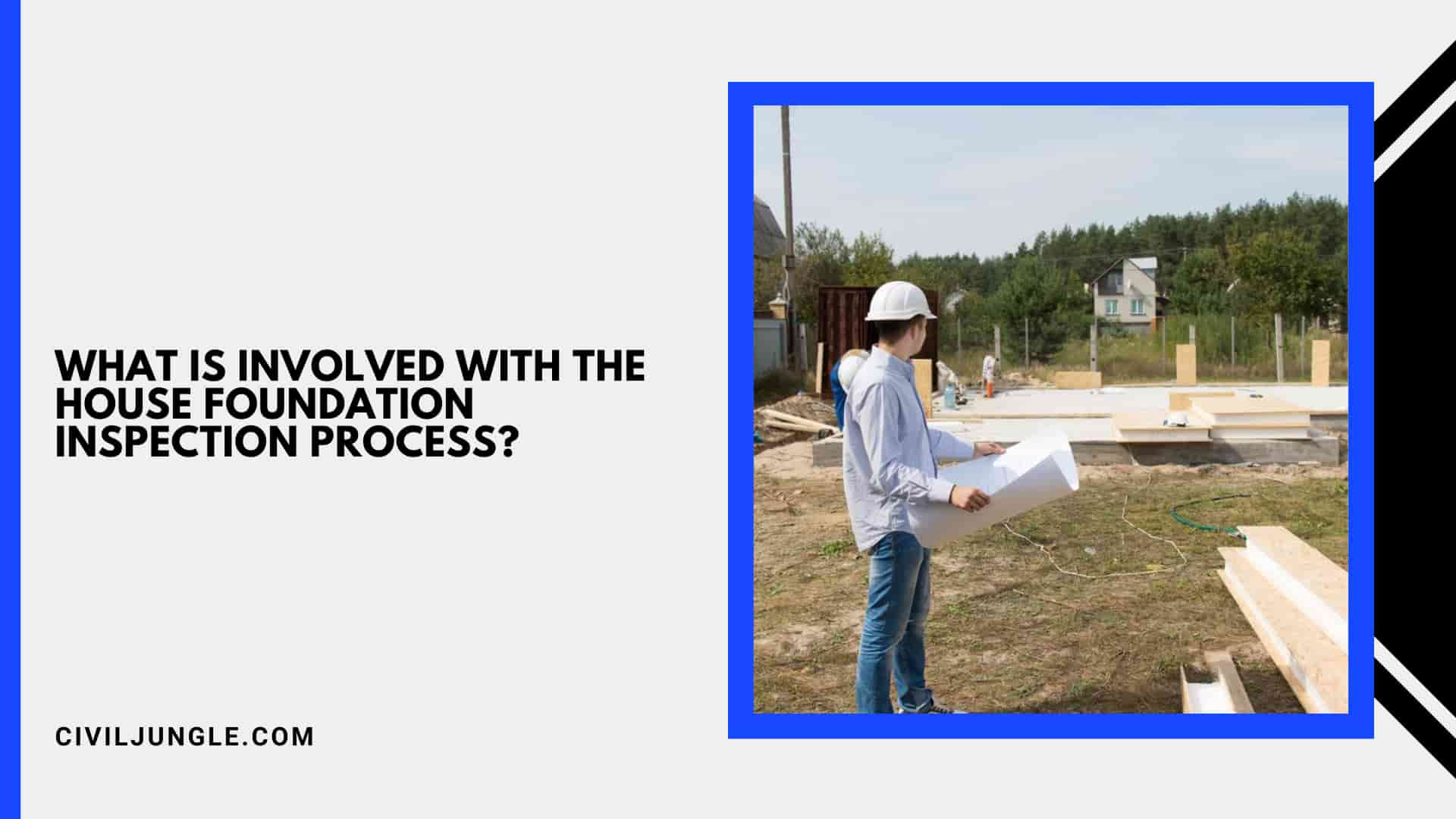What does a House Foundation Inspection Involves?
Important Point
There are various components to a residential foundation inspection. Before having your foundation examined, it’s a great way to understand what’s required. Experienced foundation inspectors follow a very well process irrespective of where you live.
The foundation firm representative will search for all of these symptoms of foundation problems by:
- Look for fractures in the walls, and ceilings, including flooring, then use a Zip Level to evaluate how far the foundations is out of line.
- Throughout a drought, large trees near a home will search out moisture under the slab. As a result, the interior will dry out and the floor will droop. Root barriers may be required.
- Examine the exterior of your house. They’ll inspect your fascia boards, brick veneer, slab, and other areas for cracks.
- After the specialist has finished looking for signs of foundation damage, they will discuss the inspection with you. According to our experience, the contractor will frequently advise that no foundation repairs are necessary. It’s not unusual for cracks to be aesthetic in nature.
An inspection, also known as a consultation or, in our case, an In-Home Assessment, determines the best course of action for fixing a home’s foundation, depending on the company.
A foundation repair professional will inspect your property and listen to your worries as you point out any issues you may notice.
A foundation expert will also notice indicators and difficulties that you may not be aware of that indicate foundation degradation and the need for repair.
Measurements will be gathered throughout the inspection, and damage and failure spots on the outside and inside of the home will be examined.
After that, a strategy for repairing your home’s foundation will be devised. The most crucial thing you want to hear is the projected cost of the repairs, which will also be covered.
The details of a foundation inspection can differ from one company to the next. Some businesses give a drawing of the house for you to study and plan your future moves.
Others will provide you with a report based on their calculations. Some may simply offer you a verbal estimate and have a conversation with you.
A foundation inspection is the most significant step in the pre-repair process, as it is crucial in detecting and addressing the homeowner’s concerns, as well as ensuring that any problems discovered are addressed in a clear and precise manner.
In certain circumstances, after consulting with a foundation repair expert, the best course of action may be to wait and observe how things evolve over time and seasons.
Based on how well the house is utilized as well as what the state needs for the house, quite often the wisest course of action is to do nothing at all.
A house inspection entails three steps:
- Consultation with a contractor
- Letting a contractor inspect your foundation is a good idea.
- Letting the contractor perform a visual inspection of your home, as well as the drainage, vegetation, and slope surrounding it.
What Is Involved with the House Foundation Inspection Process?
The technique comprises executing particular activities including inspecting the foundation for fractures, deteriorating walls, and floors, as well as other indications of problems. This would be evidenced by the fact that the structure is solid and not susceptible to sinking and cracking.
A foundation firm official will visit with you and attend to everything you’ve to say as a step of the procedure. The contractor will then assess the exterior of your home.
If you have a slab foundation, the procedure is going on the outside of your house, and looking for fractures in the slab, brick veneers, fascia boards, as well as other areas.
If your home has a pier as well as a beam foundation, the technique differs slightly from that of a slab foundation. If your home was built with piers and beams, the contractor will enter the crawlspace beneath your structure and thoroughly inspect it to see if it is moist or musty.
They will inspect the state of your piers, beams, and joists. If any of the wooden parts are wet or decaying, you may have a plumbing or foundation drainage issue that must be addressed. In both circumstances, the foundation repair professional will inspect your home for additional damage.
During the operation, he or she will inspect your floors, walls, and ceilings for cracks and take measurements to assess how out of level your foundation is. The contractor will be able to identify if various areas of your home are 1″ lower than others, or even 6″ lower.
When the contractor has completed this process, he will discuss your foundation inspection with you and make recommendations on where foundation piers should be built.
It is common to discover that foundation repair is not required. This is due to the fact that some cracks are simply cosmetic and do not require repair.
Examining the Home’s Exterior
The majority of foundation examinations begin on the exterior of the home. The inspector can break down any potential concerns that are visible or occurring outside by becoming acquainted with the home’s exterior.
Window failure or separation of trim on the outside of the home are common examination items. The direction of diagonal or stair-step cracking will be checked by the inspector.
The contractor might also analyze the condition by gapping or stretching caulk lines. All of these symptoms can help you figure out where the foundation is damaged and which way it’s settling.
The external inspection of the residence includes looking at the soil around the house, gutter runoff, brick cracking, and the foundation. The examination proceeds inside for a full image after analyzing damaged areas and trouble developing red flags on the exterior.
Examining the Interior of the House
Going through the house is necessary, as is having access to the entire house. The inspection may not be possible to be performed if all areas of the house are not available for inspection.
The majority of inspections begin when the homeowner has noticed signs of damage. These issues are either addressed to the inspector in person during the inspection or in advance via phone calls and photos.
After looking at the places where homeowners noted the problems, the inspector will check for less obvious symptoms that a homeowner may not even recognize are a problem or indicative of one.
The interior of the home must be inspected to see where the foundation problems are occurring. The inspector takes measurements of the rooms in the house to provide clear proportions for the scale sketch of the house and the location of any problems discovered.
Also Read: What Is Deep Foundation | Types of Deep Foundation
Home and Work Proposal Illustration
The following stage is to provide a drawing that contains the damages, recommended repair solutions, and a thorough plan to correct the foundation problem with your property when the exterior and interior inspections are completed.
Measurements had already been made to confirm that the measurements on the drawing were accurate. The primary purpose is to offer a precise graphic that depicts the actual strategy for home restoration. Some businesses provide drawings in a variety of formats.
It’s normal to anticipate a hand-drawn diagram on paper. Inspection reports created with software and distributed electronically are very widespread in today’s digital age. A proposal for work and cost is included in this final delivery for the homeowner’s consideration.
What Does an Inspection Cost?
The price of an inspection varies depending on the company. Some businesses provide a free estimate, while others require a fee. A plan for repair is formed, and a cost is stated during any inspection, consultation, or evaluation.
The quantity of detail offered and the amount of time spent listening to a homeowner’s issues may be the difference between one provider and another. Alternatively, the difference could simply be your perceptions of the contractor as a person and how they make you feel.
Free inspections may be just as thorough as expensive examinations. Free foundation consultations, like expensive inspections, might include a sketch, and both can appear quite professional.
On the surface, free inspections appear to be similar to paid examinations. Free inspections may be just as effective in achieving your requirements.
The price of a paid consultation inspection varies, but it usually costs between $200 and $350. This amount may appear exorbitant at first glance, but consider why it is being charged.
If a commitment is made for the work to be done, this amount can be applied to the cost of the repairs in most companies.
The foundation examination is an important part of the foundation rehabilitation process. The idea is the same whether you pay for an inspection or get one for free. Inspections enable the planning of how the repair will proceed as well as the procedures required to complete it.
Frequently Asked Questions (FAQ)
When Should I Get a Foundation Inspection?
- Visible Damage: When you notice cracks or other signs of foundation problems.
- Before Buying/Selling a Home: Ensuring the foundation is in good condition.
- After Natural Disasters: Following events like earthquakes, floods, or significant storms.
Can Foundation Issues Be Repaired?
Yes: Most foundation problems can be repaired. Common solutions include underpinning, installing piers, and improving drainage around the home.
What If No Repairs Are Needed After the Inspection?
- Observation: Sometimes, the best course of action is to monitor the situation over time.
- Preventative Measures: Implementing measures like improving drainage and maintaining consistent soil moisture can help prevent future issues.
What Tools Do Contractors Use During an Inspection?
- Zip Level: For measuring the levelness of the foundation.
- Moisture Meter: To detect moisture levels in crawlspaces or basements.
- Flashlight and Camera: For detailed visual inspections and documentation.
Like this post? Share it with your friends!
Suggested Read –
- What Is a Slab Foundation
- All About Foundation Problems
- Wet Slab Foundation Drainage Issues and Prevention
- Should I Buy a Home That Had Previous Foundation Problems?
- How to Identify Common Signs of Foundation Problems in Houses or Commercial Buildings?



Leave a Reply